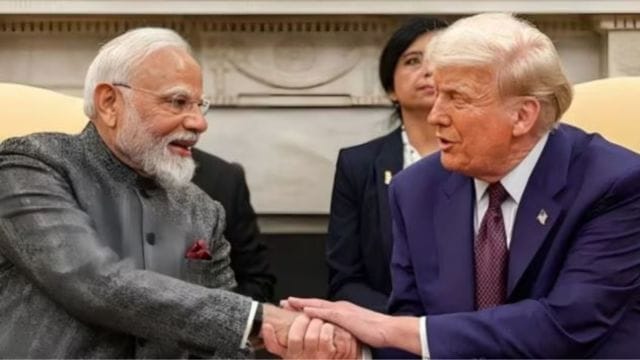Commerce Secretary Sunil Barthwal said Tuesday that the Bilateral Trade Agreement (BTA) talks with the US are focused on the exchange of “right facts” and the “true picture” of trade between the two countries. This comes as US President Donald Trump has consistently sought to pressurise trade partners, accusing them of “ripping the US off” on goods trade, but overlooking the advantages that America enjoys in the services sector.
“When we engage with the US team, all the facts are on the table, and the negotiations are based on the right facts and the data we exchange with them. That is completely rooted in the true picture which exists between the two countries. So, the BTA progresses on those lines,” Barthwal said.

Multiple experts in India have also pointed out that the 26 per cent reciprocal tariffs announced by the US on India were based solely on goods trade, while ignoring services trade — an area where the US and other Western countries hold considerable advantages over developing nations.
Story continues below this ad
According to data compiled by the US Bureau of Economic Analysis, which falls under the country’s Department of Commerce, services exports from the US to India have consistently grown over the last three years. In 2022, such exports stood at $26.53 billion, rising to $33.99 billion in 2023, and $40.26 billion in 2024.
Notably, the US recorded a marginal trade deficit with India in terms of services imports from New Delhi during the same period — with imports recorded at $33.03 billion in 2022, $36.4 billion in 2023 and $40.74 billion in 2024.
India is considered the largest market by user base for several major US tech companies — such as Meta’s Facebook, Instagram and WhatsApp, and Alphabet’s Google Search and YouTube — owing to its large population and some of the world’s lowest internet data rates.
As such, beyond direct monetary value, Indian users provide hundreds of millions of eyeballs for American tech products, while also generating vast amounts of data to fine-tune their services.
Incidentally, countering concerns over the selective use of goods trade deficit, China, in a white paper released last week, said that services and local sales of domestic enterprises’ branches in the other country (i.e., local sales generated through two-way investment) should also be taken into account when discussing trade.
Story continues below this ad
“When the three components — trade in goods, trade in services, and local sales of domestic enterprises’ branches in the other country — are considered together, it becomes clear that the economic and trade benefits accrued by China and the US are roughly balanced,” the Chinese white paper stated.
In India, revenues from major American companies’ operations here have been on a steady rise, particularly in online advertising, which has seen substantial growth due to increasing digital adoption in the country.
For instance, Meta India’s revenue from operations in FY24 grew by 9.3 per cent to Rs 3,034.8 crore, up from Rs 2,775.7 crore in FY23, while its net profit rose by 43 per cent to nearly Rs 505 crore. Meta India also makes royalty payments to Meta USA for the commercialisation of intellectual property, along with infrastructure charges.
Similarly, Google India saw its revenues increase by 26 per cent to Rs 5,921.1 crore in FY24, from Rs 4,700 crore in FY23. Microsoft India’s FY24 revenue grew by more than 18 per cent year-on-year to nearly Rs 23,000 crore.
Story continues below this ad
The Global Trade Research Initiative (GTRI) said that the US frequently misrepresents trade figures. “For example, Trump claimed that the US trade deficit with India is $100 billion, whereas India’s official data places it at under $45 billion. Similarly, the White House fact sheet inaccurately stated that India imposes a 100 per cent tariff on Harley-Davidson motorcycles, when the actual tariff was reduced from 50 per cent to 30 per cent on 1 February 2025,” the GTRI report stated.

































